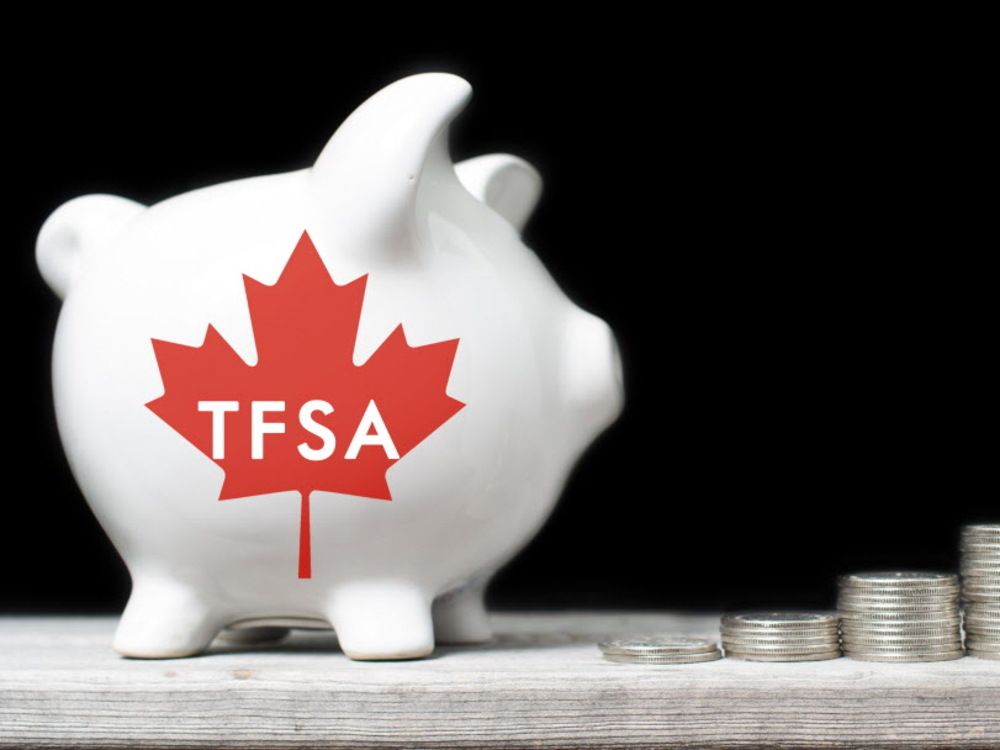When you’re tasked with launching a new product, brand equity is your secret weapon. Whether you’re a high-growth startup pushing into new categories or a legacy brand evolving for a new generation, the stakes are the same: win trust, reduce GTM friction, and drive adoption fast.
That’s why high-growth startups and established enterprises turn to branding agencies to launch products that align with their identities and deliver ROI.
Brand extension, when done right, leverages what your audience already believes about you, so you can expand without starting from scratch. It’s not just a marketing tactic; it’s a strategic move to unlock growth.
From CPG to SaaS, the most successful product launches start with alignment between the brand, the audience, and the next evolution of value.
What is brand extension?
Brand extension is a strategy where companies launch new products in new product spaces outside their usual market using the same brand name. This approach builds on brand trust to gain quick acceptance, reduce marketing costs, and expand market reach across different industries.
According to Nielsen, 92% of global consumers trust earned media, up 18% since 2007. Over 58% trust company websites, and 50% trust opt-in emails. If customers already trust your message, they’re more likely to buy, recommend, and repeat. Let’s learn more about brand extension in detail.
Brand extension allows for the new products to enter the market with pre-established brand awareness for a brand that earned laurels in a different product category.
TL;DR: Everything you need to know about brand extension
- What it is: Brand extension is a marketing strategy where a company uses its existing brand name to launch products in entirely new categories.
- Why it matters: It allows brands to accelerate growth, enter new markets faster, and build on the trust they’ve already earned.
- Types of brand extension: Line extensions, companion product extensions, customer franchise extensions, company expertise extensions, and owned benefit extensions.
- Successful brand extension examples: Dove Men+Care expanding from beauty to men’s care, Apple Card building on Apple’s tech loyalty, and Clorox Cleaners leveraging disinfecting power.
- Failed brand extension examples: Colgate Lasagna and Cosmopolitan Yogurt failed due to category mismatch and consumer confusion.
- Pros and cons: Advantages include lower marketing costs, faster adoption, and cross-selling opportunities. Risks include brand dilution, customer backlash, and high failure rates if poorly aligned.
Although the new product is unfamiliar to consumers, they are typically aware of the brand that created the product, which can make it more likely for market penetration success.
What are the 5 types of brand extension strategies?
There are several ways a company can approach a brand extension, but before any strategy is decided, the most important thing to remember is to never forget what your customers need and what they expect from you as a brand.
1. Line extension
A line extension is the most familiar and least risky brand extension strategy. It involves introducing new variations of an existing product within the same category, such as flavors, formats, sizes, or use cases. This strategy works particularly well when your brand already has strong category authority and consumer trust.
Take the example of a skincare brand like Aveeno expanding its lotion line to include options for sensitive skin, eczema, or extra hydration. These aren’t entirely new products; they’re refined solutions for more specific needs. For brands with loyal followings, line extensions feel natural because they expand depth without altering the core promise. It’s an excellent tactic when search demand includes terms like “best eczema lotion from trusted brands” or “product line expansion within skincare.”
2. Companion product extension
Companion product extensions introduce new offerings that pair logically with an existing product. They’re designed to live within the same customer experience and enhance the primary product’s usage or outcome. These extensions are driven by context, not category, and that’s what makes them so intuitive.
Gillette is a classic example: after owning the razor category, it expanded into shaving creams, gels, and aftercare. The logic was simple: if someone trusts your razor, they’ll likely trust the brand to deliver a better shaving routine overall. This type of brand extension aligns with long-tail keywords like “best grooming product bundles” or “brands offering full grooming systems.” If you wish to explore ways to grow product suites without alienating current users, companion products offer a compelling path.
3. Customer franchise extension
Some brands have cultivated such deep emotional equity that they can confidently leap into unrelated categories. A customer franchise extension leverages brand love, not product logic, to drive adoption. It’s not about what the brand makes, but what it means to its audience.
Apple is the textbook case. It started with computers, but its customer base has followed it into music players, phones, wearables, services, and even credit cards. That’s the power of brand trust at scale. These kinds of brand extensions work because consumers don’t just buy Apple products, they buy into the Apple experience. For companies with strong Net Promoter Scores (NPS) or cult-like followings, this strategy answers the keyword intent around “how to extend a brand through customer loyalty.”
4. Company expertise extension
This strategy builds on a company’s core technical or creative capabilities, allowing it to expand into adjacent or complementary markets. It’s particularly effective when the brand is known for excellence in a foundational discipline, such as engineering, storytelling, or design.
Sony, for instance, has built an empire that spans consumer electronics, gaming consoles, audio systems, music labels, and film production. These may look like diverse businesses, but they’re all unified by a consistent brand expertise in multimedia experience creation. For brands targeting B2B or enterprise buyers on G2, this extension strategy often manifests as vertical software stacks or modular hardware ecosystems. Think “expanding product suite based on company expertise.”
5. Owned benefit extension
When a brand becomes synonymous with a particular functional benefit, it can successfully migrate that benefit across categories. This is more than a clever pivot; it’s about operationalizing what your brand does best in new ways, for new problems.
Arm & Hammer is a standout here. Known for baking soda’s odor-neutralizing power, the brand extended into toothpaste, deodorant, fridge deodorizers, cat litter, and laundry detergent. Each of these products delivers on the same core promise — fighting bad smells — but in totally different formats and categories. For marketers thinking about brand architecture, this approach aligns with intent-based queries like “examples of functional brand extensions” and “how to apply core brand value in new products.”
Each of these brand extension strategies starts with clarity, not creativity. The best-performing extensions aren’t just clever, they’re aligned with what your customers already believe about your brand.
Brand extension vs. line extension: key differences
Understanding the nuance between brand extension and line extension is essential for marketers and product leaders planning their next move. While the two terms are often used interchangeably, they serve different strategic purposes and carry unique risks and rewards.
Here’s a side-by-side breakdown:
| Feature | Brand extension | Line extension |
| Definition | Launching a new product in a completely different category under the same brand name. | Expanding a current product line within the same category (e.g., new flavors, sizes, or formats). |
| Goal | Enter new markets, broaden reach, diversify revenue streams. | Deepen presence in current market, satisfy niche preferences. |
| Customer perception risk | Higher, misalignment may confuse or alienate existing customers | Lower, stays within established customer expectations |
| Example | Dove launching a baby care line | Dove introducing new soap scents or formats |
| Cost implication | Potentially higher due to category research, market fit, and education | Lower since existing infrastructure and knowledge are used |
| Brand trust dependency | Critical, relies heavily on prior reputation and emotional capital | Important but less risky since customer behavior is already aligned |
| Failure risk | High if brand relevance or category fit isn’t obvious | Low to moderate, usually due to cannibalization or clutter. |
Brand extensions allow you to elevate and diversify, while line extensions help you optimize and specialize within your niche.
How do you plan a successful brand extension strategy?
A successful brand extension isn’t just a creative leap; it’s a strategic alignment exercise that bridges audience expectations with bold innovation. Here’s how to approach it:
- Audit your brand’s core equity: Understand what your brand truly means to your audience. What emotional or functional value do they associate with your brand? Is it trust, simplicity, luxury, or sustainability? Your new product must amplify that core value, not dilute it.
- Validate market fit: Research the target category for unmet needs. Does your brand have the permission to operate in this space? Use voice-of-customer data, competitor gap analysis, and social listening to forecast reception.
- Build a strategic fit matrix: Cross-reference your brand’s strengths with the opportunity landscape. Score potential categories based on brand relevance, operational feasibility, customer overlap, and competitive differentiation.
- Prototype and A/B test: Before a full rollout, pilot the concept with loyal users or niche segments. Collect qualitative and quantitative feedback on everything from product design to packaging to messaging.
- Craft a cohesive go-to-market narrative: You’re not just launching a product, you’re telling a story. Explain why this extension makes sense for your brand and how it aligns with your mission. Consistency in tone, messaging, and identity is non-negotiable.
- Prepare for cannibalization: Brand extensions can affect core product sales—positively or negatively. Forecast demand shifts and be ready to rebalance production or marketing focus.
No matter which strategy you choose, your goal is to match your brand’s strengths to your customers’ evolving needs, without losing sight of what made you trusted in the first place
Ready to accelerate your go-to-market strategy?
Don’t waste time vetting vendors from scratch. See what real software buyers like you are saying on G2 and connect with top-rated marketing agencies that know how to launch, scale, and drive pipeline from day one.
Find the best marketing service providers and marketing strategy agencies on G2 now!
7 modern brand extension examples that actually worked
Plenty of companies have demonstrated monumental success with brand extensions, but it’s significantly more common for an extension attempt to fail. In fact, roughly 85 percent of brand extensions flounder within one year of launching.
Let’s examine eight of the most iconic brand extension examples, highlighting the good, the bad, and the outright hilarious efforts.
1. Spotify in the car: Turning listeners into co-pilots
Spotify’s move into shared, in-car listening is a smart brand extension that strengthens its presence beyond mobile and desktop apps. By allowing passengers to co-create and contribute to real-time playlists while on the road, Spotify positions itself as a social music platform, not just a solo streaming service. This experience caters to a broader lifestyle use case and elevates Spotify into a tool for connection, not just consumption.
From a strategic lens, this expansion capitalizes on the long-tail keyword trend of “collaborative music apps for road trips” and meets user intent for “how to share music with passengers in the car.” It also anticipates PAA-style questions like Can Spotify be used collaboratively in a car? The brand isn’t just delivering audio — it’s delivering shared experience. That emotional alignment deepens brand loyalty in moments that matter.
2. Tesla’s powerwall add-ons: Scalable energy
Tesla’s energy division has rapidly evolved, and its introduction of Powerwall expansion units represents a compelling brand extension. Instead of selling batteries as static, one-size-fits-all solutions, Tesla now empowers customers to expand their storage capacity over time. This flexibility aligns with the brand’s innovation-first narrative and further positions it as a leader in sustainable home energy ecosystems.
It speaks directly to homeowners wondering, “Can I add more Powerwalls later?. It also directly answers the PAA query “Is Tesla Powerwall expandable?, which is crucial for homeowners who want future-proof energy systems. Tesla’s brand equity in electric vehicles seamlessly supports trust in its energy ambitions, and this modular approach gives the brand room to grow along with its customers’ needs.
3. Apple Watch gestures: Wearables meet wallets
Apple continues to refine the Apple Watch into a powerful daily assistant, and its gesture-based payment features are a key extension of that utility. With simple finger taps or wrist movements, users can now authorize purchases — no card, phone, or button press needed. It’s a smooth user experience rooted in Apple’s design philosophy: invisible innovation that just works.
This evolution meets the search demand for “Apple Watch gesture payment features” and answers intent-based queries like “how to pay with Apple Watch using gestures.” It also neatly maps to the PAA question, “Can Apple Watch make payments without touching the screen?” More than just a smartwatch, Apple Watch becomes a wearable wallet, enhancing convenience and reinforcing Apple’s credibility in mobile-first finance.
4. Nike apparel: From athleisure to athletic intelligence
Nike’s brand extension into smart apparel is less about fabric and more about feedback. By embedding motion sensors and syncing clothing with its Nike Training apps, the brand provides real-time coaching to help athletes optimize form, reduce injury risk, and push personal limits. This transforms Nike from a sportswear company into a personal fitness ecosystem.
Consumers searching for “smart workout clothing that tracks performance” or “Nike sensor-enabled fitness gear” will find this extension directly relevant. It also addresses questions like Does Nike offer smart fitness apparel? As wearables evolve, Nike isn’t just following trends; it’s stitching intelligence into the clothing itself, creating a seamless connection between athlete, data, and brand.
5. Garmin Vital: GPS giant reinvents rellness
Garmin has taken a confident step beyond outdoor adventure and navigation into the world of daily wellness tracking. With Garmin Vital, the company offers a wrist-worn device that continuously monitors health metrics like heart rate, oxygen saturation, hydration, and even stress levels. This shift enables Garmin to serve not just weekend warriors, but everyday health-conscious users.
This move taps into long-tail queries such as “Garmin health tracker for everyday use” and “what can Garmin wearables monitor.” It also answers Is Garmin good for non-athletes or everyday health tracking? By leveraging its technical accuracy and battery reliability, Garmin’s Vital line turns health data into actionable lifestyle choices, building credibility with an entirely new segment of users.
6. LEGO robotics: next generation of coders
LEGO’s programmable robotics kits are more than toys; they’re a bold expansion into STEM-based education. Designed for kids and teens, these kits combine LEGO’s classic tactile play with drag-and-drop coding tools, allowing users to build, program, and iterate. The brand effectively transitions from creative entertainment to educational empowerment.
Parents, educators, and learners are increasingly searching for terms like “coding kits for kids using LEGO” or “how LEGO teaches programming.” This directly meets PAA-aligned questions like Can LEGO help teach coding skills? By shifting from “build it” to “program it,” LEGO future-proofs its relevance in a digital-first world while staying true to its imaginative roots.
7. Samsung SmartThings kitchen: chef’s center
Samsung’s kitchen appliances have become more than tools; they’re command centers for smart home control. With SmartThings integration now embedded into fridges, ovens, and dishwashers, Samsung extends its brand from electronics to intelligent lifestyle orchestration. Imagine adjusting your lights, checking groceries, and starting a load of laundry, all from your refrigerator screen.
This shift aligns with searches like “Samsung fridge that controls smart home” or “can appliances manage SmartThings devices.” It answers the common query Can Samsung appliances control other smart home devices? This brand extension reinforces Samsung’s vision of a unified tech ecosystem, where daily tasks are simplified through seamless integration.
These modern brand extensions prove that when executed strategically, growth doesn’t mean drifting, it means doubling down on what your brand does best, in new and unexpected ways
Successful vs. failed brand extensions
Some brand extensions crush expectations. Others become marketing cautionary tales. What makes the difference? Here’s a breakdown with strategic insights for you.
| Brand | Extension | Outcome | Why it worked/failed |
| Apple | Apple Watch, Apple Card | ✅ | Strong brand equity in tech + seamless ecosystem integration. Innovation aligned with customer lifestyle |
| Dove | Dove Men+Care | ✅ | Expanded audience while staying in the personal care category. Strong emotional and functional brand equity carried over. |
| Clorox | Toilet Bowl Cleaner | ✅ | Logical extension using same brand benefit (disinfecting). Consistent with brand image of powerful cleaning. |
| Colgate | Beef Lasagna | ❌ | No logical connection between oral care and food. Consumer dissonance + brand image clash. |
| Cosmopolitan | Yogurt | ❌ | Weak product relevance and unclear audience need. Emotional brand tone didn’t match health food expectations. |
| Life Savers | Soda | ❌ | Misaligned taste expectations. Customers couldn’t reconcile candy flavor with beverage experience. |
The takeaway? Strong extensions make sense to your customers before they ever see the campaign. The moment you need to explain too hard, you’ve probably stretched too far
What are the advantages of brand extension?
Done strategically, brand extension can drive exponential growth across visibility, loyalty, and revenue. Below are the top benefits, each paired with a concise explanation:
- Reduced marketing spend: Since your brand is already recognized and trusted, you don’t need to build awareness from scratch. That means lower acquisition costs and faster traction for your new product.
- Faster adoption: Loyal users are more likely to try a new offering if it carries the brand they already know and love. This reduces hesitation and increases early adoption rates.
- Stronger positioning: Successfully entering new categories shows that your brand can evolve, reinforcing perceptions of innovation, leadership, and relevance in the eyes of consumers.
- Cross-selling opportunities: Brand extensions open the door for bundling or upselling related products. It’s easier to drive higher cart value when customers trust multiple items from the same brand
- Built-in emotional trust: Brand extensions open the door for bundling or upselling related products. It’s easier to drive higher cart value when customers trust multiple items from the same brand.
- Category authority expansion: Moving into adjacent markets helps your brand be seen as a multi-solution provider. You’re no longer just a product, you’re a platform or lifestyle.
- Better ROI on brand equity: You’ve already invested in building your brand, extensions allow you to extract more value from that equity by applying it to new revenue streams with lower risk.
What are the risks of brand extension?
Brand extension isn’t just a growth tactic; it’s a stress test for your brand’s credibility. If the extension doesn’t align with what your audience expects from you, it can do more harm than good. Here are the risks you need to weigh:
- Brand dilution: Overextending into unrelated categories can blur your brand identity and confuse customers. If people no longer understand what your brand stands for, you risk eroding trust and long-term loyalty.
- Customer backlash: Audiences are quick to call out inauthentic moves. If your extension feels forced or opportunistic, you could face social media backlash or declining engagement, especially with younger, values-driven buyers.
- Operational complexity: Entering a new category often means unfamiliar supply chains, compliance issues, and production methods. This can strain internal resources and increase costs, especially if you’re used to operating in a single vertical.
- High failure rate: Studies suggest that up to 85% of brand extensions fail within their first year. Most fall short due to poor category fit, unclear positioning, or lack of internal readiness, making this a high-risk strategy if not properly vetted.
- Loss of brand focus: When a brand tries to be too many things at once, it loses the sharp positioning that made it successful in the first place. Extension can dilute messaging, confuse teams, and muddle the customer journey.
- Cannibalization of core products: Some extensions accidentally compete with existing offerings, pulling revenue away from your flagship product rather than expanding total market share.
- Misalignment with brand values: If your extension contradicts your brand’s stated mission or image, even loyal customers may reject it. A mismatch between message and market can undermine years of brand equity.
That’s why brand extension isn’t just about innovation, it’s about alignment. Success depends on how well your new offering fits the story your brand has already earned.
Is your brand ready for an extension strategy?
Before you launch your next product, ask yourself: Is this extension solving a real customer need, or trying to distract from a shaky core offer?
If your existing product line is profitable and trusted, a brand extension could elevate your entire portfolio. But if your foundation isn’t solid, even the best extension might struggle to stick.
However, if you are enjoying a breakeven or decent profit margin, launching a brand extension framework can add value to your customers and make you stand out in the competitive landscape.
Want your brand extension to succeed from day one? Explore the best brand asset management software that helps you align messaging, storytelling, and scalability.
This article was written in 2021. It has been updated with new information.









